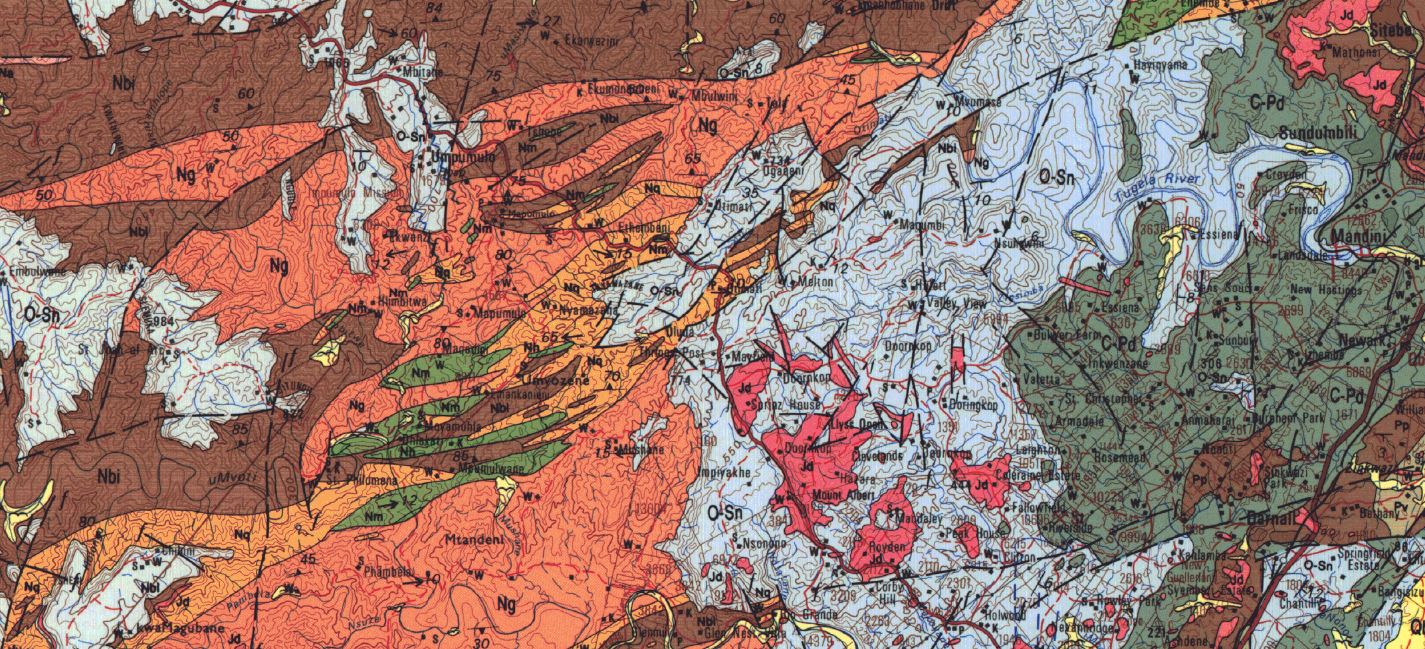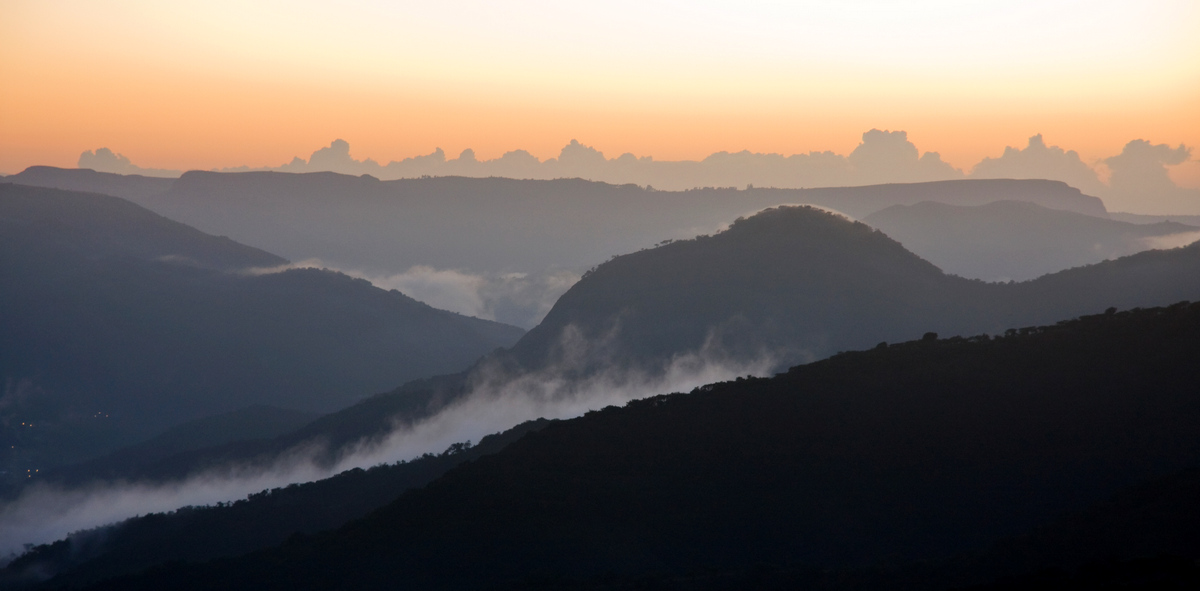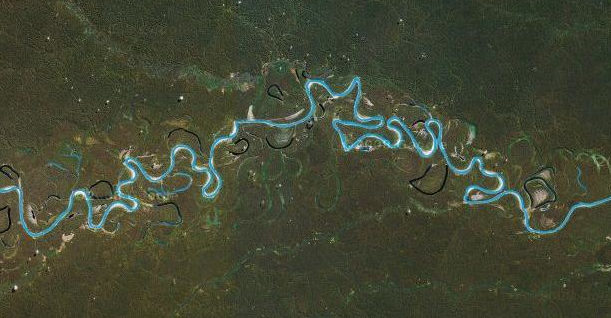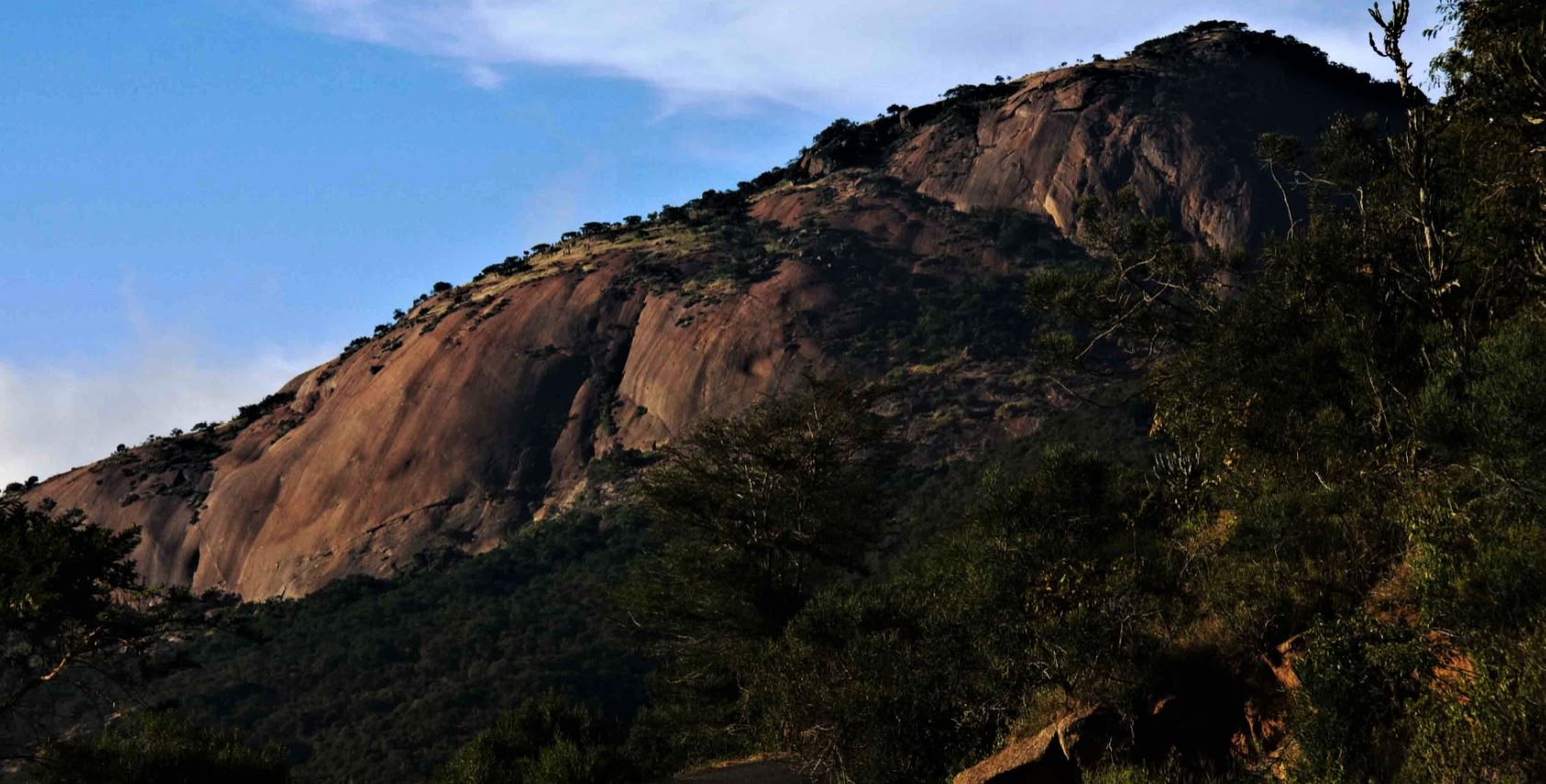Geologists, Engineers, Soil Scientists, Hydrogeologists and Town Planners use Geological maps. Clearly they are important, so question is, are we bringing geological maps into the classroom when we teach geography?
A geological map is a wonderful thing. I remember making my own – weeks spent walking miles through the bush, scrambling up river valleys, seeing places that possibly no one had ever been before. Deep, humid valleys full of scrambling vegetation, the mind-numbing noise of a million cicadas, the tugging thorns, the scorpions, the fresh dew on the boots each morning, the burning off of the morning mists and the ever-climbing sun which ultimately rains down its hammer blows on man and beast alike.

The dawn of another scorching hot day
At the end of each day I would be weather beaten, leg weary, scratched, thirsty and hungry. But in my bag would be a treasure trove of topographic maps annotated with wonderful colours, a field notebook bulging with descriptions of the outcrops, a camera full of images, and pile of rocks ready for examination in the laboratory.
Geological mapping is like unravelling a mystery – as you walk you record the strata or rock-types. The more you walk, the more you see. Eventually you can start to join the dots so to speak, marking out where a particularly rock type ends and another makes its appearance.
Soon those disparate colours on your base map coalesce into a coherent picture of the distribution of the various rock types. Geological faults need to be walked out. Folds need to be understood in three dimensions to make sense of the underlying geology, and the distribution of the strata. It is a wonderful exercise in deductive reasoning and systematic data collection.

A very fine example of a geological map
So, from hard won personal experience, when I look at a geological map, I look in awe, because I know how many hundreds of boot miles it took to make, how much sweat and toil went into defining the boundaries of the various lithologies. I well know the tugging thorns, the painful blisters, the sun burn, the snakes, the flooded rivers, the driving snow, the stinking heat that had to be endured to put that map together. Not to mention the money spent to keep a crew in the field doing essential work.
They are invaluable tools
Geologists use these maps. Soil scientists use these maps. Engineers use these maps. Hydrogeologists use these maps. In fact, all sorts of people use them. They are invaluable tools when it comes to working in an area – allowing for predictions of soil cover, engineering properties, or the aquifer characteristics to be made, or whatever parameter one is trying to chase down.
He is an expert on natural history
I must now throw a rock or two. I went on a geological field trip last Saturday. Discussions around the table with a geological map rolled out showed that most of the lovely people on the walk had never seen a geological map before. This is disconcerting, particularly in view of the vital role these maps play in engineering, environmental and hydrogeological work.

Landscape is controlled by the geology. Image shows sandstones forming the plateaus in the distance, granite domes in the middle foreground and gneisses in the deep, mist-filled valleys.
I wonder why this is the case? Going back to the geography syllabus, there are sections in the text book on drainage patterns and slope morphology, and the effect of joints on weathering, which is all well and good. In fact, in the International Cambridge A-Level syllabus under section 3.2 of Rocks and Weathering, they talk about rock type and rock structure. Fantastic. Then in Section 3.3 under Slope Processes, it says “know and understand the processes which affect slopes and how they may develop.” Also good.
What worries me, is that that seems to be the limit of it
What worries me is that, in spite of the fact that there is some acknowledgement of the underlying rocks and rock structure in Section 3.2, that seems to be the limit of it. A geological map would be enormously useful in illuminating these factors that are only acknowledged in the syllabus.

Victoria Falls is controlled by a series of well-developed geological lineaments (joints) that the Zambezi River exploits as it retreats upstream over time
Unpacking things a little more, structural geology is a fundamental part of any geologist’s skills, and many people do PhD's in the subject. Structure in this sense means joints, faults and folds. The orogenic belts of the world such as the Himalayas, the Alps and the Rockies all display the most amazing structures which many people have devoted their lives to unravelling the secrets thereof. Not just for fun either, because structural control not only affects weathering, drainage patterns and geomorphology, but also controls mineralisation and the formation of hydrocarbon traps which are drilled to provide us with energy vital to our modern lives.

Structural mapping of the Rockies provides data on where oil traps may occur and where to drill for oil
Structure is a result of tectonic stresses which cause jointing and folding, and sometimes faulting. Joints in rock are almost always found in ‘sets’ which reflect the direction of stress at the time of their formation. Often, the form parallel to faults. Faults in themselves represent zones where the strength of the rock – compressive or tensile – has been exceeded.
If we really want to understand, we need to understand the local geology
So there is a whole story around faulting and joint systems which could occupy us for days, weeks, or even a lifetime if we felt led to devote our energies in that direction My point is this – if we really want to understand slope morphology, or weathering, or why a waterfall occurs at a particular point, or why a river has followed a particular route - we need to understand the local geology – and the best way to do that is to look at a geological map of the area.
In an attempt to relieve the immense pressures
A well-developed fault line for instance will almost always be filled with material called fault breccia, which comprises shattered and broken material, mashed up as the rock ruptured and moved in an attempt to relieve the immense pressures that had been building up in the crust. Sympathetic faults parallel to the main fault may also have developed to create a fault zone rather than a single fault line. A stream flowing over a faulted landscape will always take the line of least resistance and will preferentially erode out the natural line of weakness created by the fault.

A meandering river, with possibly no geological control at all. Ox-bow lakes and infilled meanders are clearly visible.
Another example of structural control is when a fault, because its brecciated and fractured nature, provides a more permeable zone that allows for the ingress of surface water. This will lead to increased weathering and ultimately some kind of negative topographic feature – a depression, a valley, or possibly even a deep gorge if it is eventually exploited by a river.
Will form a local base level which a river will struggle to erode
The underlying rock itself then needs to be factored in. A dolerite sill or a granite intrusion, with a strength of say 350 megapascals (MPa), will form a local base level which a river will struggle to erode. By way of comparison, normal structural concrete that goes into building a skyscraper has a strength of around 30 MPa. Shale on the other hand may have a strength of 10 MPa, which is way less than granite or dolerite, and certainly way less than concrete. A river will cut down into shale until such time as a hard, igneous intrusion is encountered, leading to the establishment of the local base level mentioned earlier. This base level may ultimately become a knickpoint in the river profile if a waterfall develops.

A massive, resistant granite batholith
Warming to my theme, a slope underlain by dolerite or granite will have a much steeper profile than one underlain by shale. Taking things further, the dip of the strata may also affect the morphology of the slope – a hard sandstone horizon dipping gently to the north will develop a slope which mirrors the underlying sandstone on its north face, and possibly a steep rocky scarp slope on the southern side. This is called a cuesta, with an extreme end member being a hogsback.
I would humbly ask - in fact I beg of you...
So there you have it - I have thrown my rocks to make my point. We cannot hope to understand the geomorphology without an understanding of the underlying geology, because the geology is the underlying control. So, I would humbly ask - in fact I beg you of you, to bring a geological map into the classroom to assist in your teaching endeavours.
Having said all of that, I am more than willing to assist with maps, interpretation of the geological terms and explain matters. I think I must put together a short video on these things.
I look forward to your comments and feedback in the comments section below.
If this resonates with you and you think it may be valuable to others, please share.
An Invitation
Start your geographical adventures by reading our articles here. They are pertinent to the physical geography courses that we have to teach, and do much to frame the subject and to provide insights that are not normally to be found in the text books. Enjoy, and leave your comments and requests in the comments section.
Hang out with fellow geographers here, check out what is happening here, and go see some amazing videos of wonderful landscapes here. And last but not least, amazingly interesting snippets which brings earth science and geography into our everyday lives can be found here.
So looking forward to adventuring with you
Want to come adventuring? Who wouldn't? So sign up for our newsletters and stay informed when we launch new courses or go off on happy wanderings.
A promise - no spam, no nonsense, no passing on of your details


Where can I get a geological map of my area?
email me and let me see what I can do.